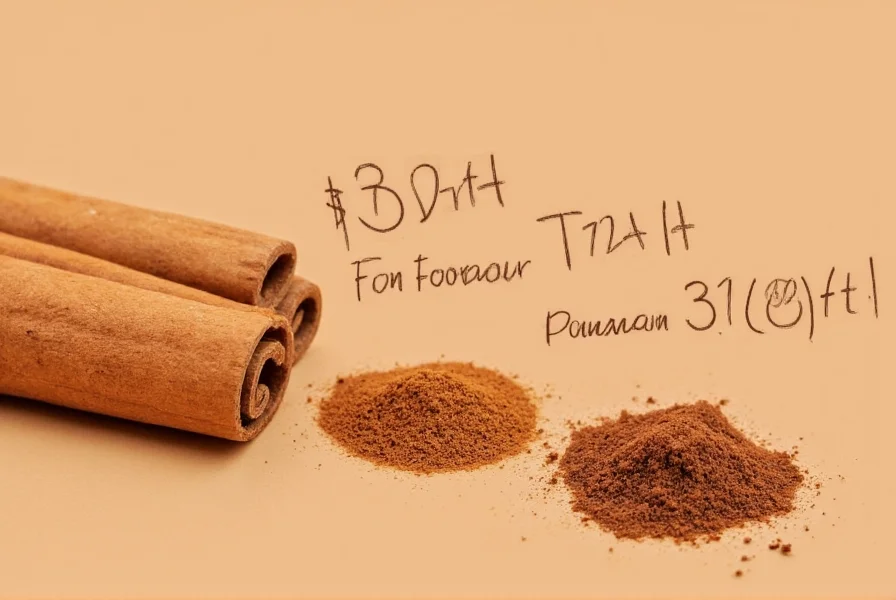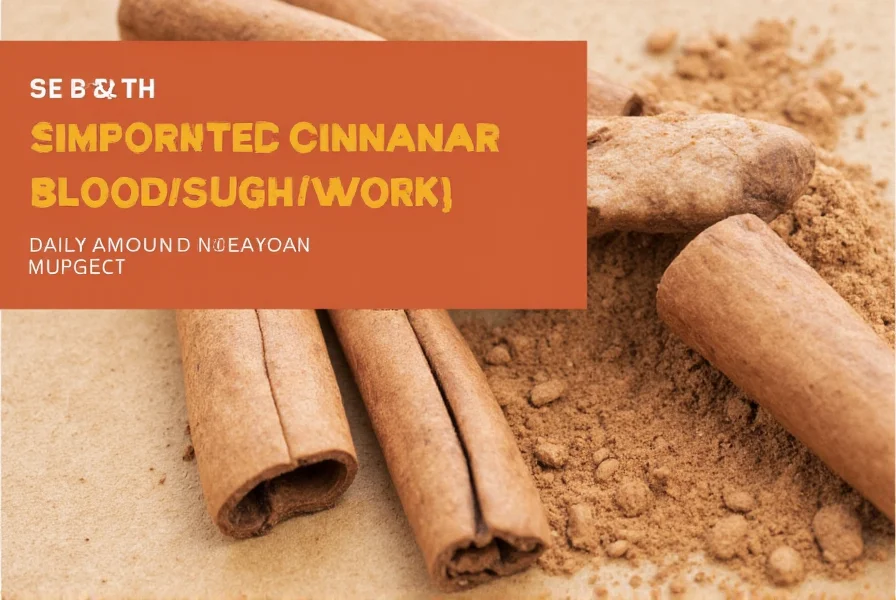For individuals exploring natural approaches to blood sugar management, cinnamon has emerged as a promising option supported by scientific research. This common kitchen spice contains bioactive compounds that may improve insulin sensitivity and help regulate glucose metabolism. Understanding the appropriate cinnamon dosage for blood sugar control is essential for achieving potential benefits while avoiding adverse effects.
Understanding Cinnamon's Effect on Blood Sugar
Multiple clinical studies have investigated cinnamon's potential role in blood sugar regulation. The active components, particularly cinnamaldehyde and polyphenols, appear to enhance insulin signaling and mimic insulin activity. A comprehensive review published in the Journal of the Academy of Nutrition and Dietetics found that cinnamon supplementation significantly reduced fasting blood glucose levels in people with type 2 diabetes and prediabetes.
When considering how much cinnamon to take daily to lower blood sugar, it's important to recognize that effects aren't immediate. Most research studies showing positive outcomes administered cinnamon consistently for 4-12 weeks. The duration of use plays a crucial role in achieving measurable improvements in blood sugar markers like HbA1c and fasting glucose.
Different Cinnamon Varieties and Their Implications
Not all cinnamon is created equal when addressing how much cinnamon per day to lower blood sugar. Two primary varieties exist with significant differences:
| Cinnamon Type | Coumarin Content | Recommended Daily Limit | Best For Blood Sugar |
|---|---|---|---|
| Ceylon ("True" Cinnamon) | Very low (0.004%) | Up to 6 grams daily | Ideal for long-term use |
| Cassia (Common Grocery Store) | High (5-10%) | 1-3 grams daily (max 4-6 weeks) | Short-term use only |
Coumarin, a naturally occurring compound found in higher concentrations in Cassia cinnamon, can cause liver toxicity with prolonged high-dose consumption. This is a critical consideration when determining optimal daily cinnamon intake for blood sugar control. Ceylon cinnamon contains significantly less coumarin, making it safer for extended use at higher doses.

Research-Backed Dosage Guidelines
Based on current scientific evidence, here's what we know about effective cinnamon dosage for lowering blood sugar:
- 1-3 grams daily (approximately 1/4 to 1 teaspoon): Most commonly studied dosage range showing significant blood sugar improvements without safety concerns
- 1-6 grams daily (1/2 to 2 teaspoons): Upper range used in studies, with higher doses typically reserved for short-term use with Ceylon cinnamon
- Consistency matters: Benefits appear after 4-12 weeks of daily consumption, not from occasional use
- Timing: Taking cinnamon with carbohydrate-containing meals may enhance its blood sugar stabilizing effects
A 2022 meta-analysis in Clinical Nutrition examined 16 randomized controlled trials and concluded that 3 grams of cinnamon daily for 8-12 weeks produced the most consistent improvements in fasting blood glucose and HbA1c levels. This represents the current gold standard recommendation for daily cinnamon amount to reduce blood sugar.
Safety Considerations and Potential Interactions
While exploring how much cinnamon should I take daily for blood sugar, safety must be prioritized. Cinnamon supplements can interact with certain medications, particularly those affecting blood sugar or liver function. Individuals taking diabetes medications should exercise caution, as cinnamon may enhance medication effects and potentially cause hypoglycemia.
Those with liver conditions should be particularly careful with Cassia cinnamon due to its higher coumarin content. The European Food Safety Authority recommends keeping coumarin intake below 0.1 mg per kg of body weight daily. For a 150-pound person, this translates to no more than 4-5 grams of Cassia cinnamon daily.

Practical Implementation Strategies
Implementing the right cinnamon daily dosage for blood sugar management requires practical approaches. Start with 1 gram (about 1/4 teaspoon) daily and gradually increase to assess tolerance. Mix cinnamon with foods rather than consuming it straight to prevent throat irritation. Excellent options include:
- Adding to morning oatmeal or smoothies
- Mixing with Greek yogurt and berries
- Stirring into coffee or tea
- Sprinkling on roasted vegetables
- Using in baking recipes as a partial sugar substitute
For those seeking how much ground cinnamon to take daily for blood sugar, measuring accurately is crucial. A standard US teaspoon holds approximately 2.6 grams of ground cinnamon, while a 1/4 teaspoon contains about 0.65 grams. Using a kitchen scale provides the most precise measurement for therapeutic dosing.
When to Consult Your Healthcare Provider
Before implementing any cinnamon supplementation for blood sugar control, consult with your healthcare provider, especially if you have diabetes, take blood-thinning medications, or have liver conditions. Regular blood sugar monitoring is essential when adding cinnamon to your regimen, as it may affect your medication requirements.
Remember that cinnamon should complement—not replace—standard diabetes care. The most effective approach combines appropriate cinnamon dosage with a balanced diet, regular exercise, and prescribed medications as directed by your healthcare team. Those exploring natural blood sugar control with cinnamon dosage should view it as part of a comprehensive management strategy.











 浙公网安备
33010002000092号
浙公网安备
33010002000092号 浙B2-20120091-4
浙B2-20120091-4